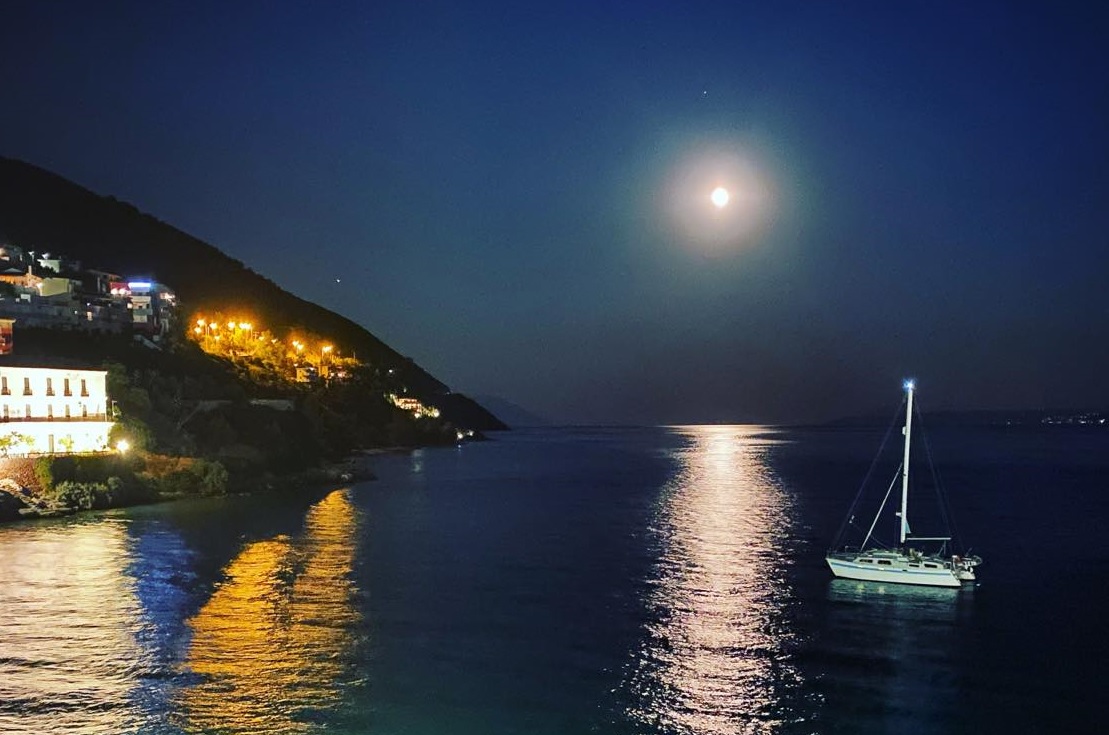
The August full moon, or blue moon, was seen rising over ancient archaeological sites in Greece, such as the Acropolis and the Temple of Poseidon, on Sunday night.
The full moon, which many call a seasonal “blue moon,” gave stargazers something to smile about on the night as they prepared their cameras to capture the rare sight.
A total of 120 archaeological sites and museums across Greece also opened their gates free of charge so that the public could enjoy the August full moon. At the same time, a series of cultural events have been scheduled between August 20-25, 2021.
Concerts, exhibitions throughout Greece for full moon
Music concerts, theatrical performances, dance performances, poetry recitations, documentary screenings, art exhibitions, stargazing and guided tours are the main events that have been organized this year by the Ministry of Culture and Sports for the August full moon.
The August full moon is seen rising over the ancient temple of Poseidon at Sounio, a southern cape of Attica region in Sounio, Greece, on Aug. 21, 2021#fullmoon pic.twitter.com/BOjogExmKP
— lolos marios (@lolosmarios) August 21, 2021
Full moons occur when the moon is exactly on the opposite side of the Earth from the sun. Generally, a full moon occurs 12 times in a year, or three times for each of the four seasons.
Full moon, blue moon, sturgeon moon
While the term Blue Moon is commonly reserved for the second full moon of a calendar month, August’s Sturgeon Moon is considered a Blue Moon based on an older definition of the term, which represents the third full moon that occurs in a single season — in this case, summer — that has four full moons, according to a full moon guide from NASA.
“The first recorded use of ‘Blue Moon’ in English dates from 1528,” NASA’s Gordon Johnston wrote in the full moon guide for August and September. “Speculations on the origin of the term include an old English phrase that means ‘betrayer moon’ or a reference to rare events, such as when dust in the atmosphere makes the moon actually appear blue.
“Since the 1940’s the term Blue Moon has also been used for the second full moon in a month that has two full moons.”
August’s full moon is traditionally called the Sturgeon Moon, after the giant sturgeon fish of the Great Lakes and Lake Champlain, which were most readily caught during this time of the summer, according to The Farmers’ Almanac.
See all the latest news from Greece and the world at Greekreporter.com. Contact our newsroom to report an update or send your story, photos and videos. Follow GR on Google News and subscribe here to our daily email!



